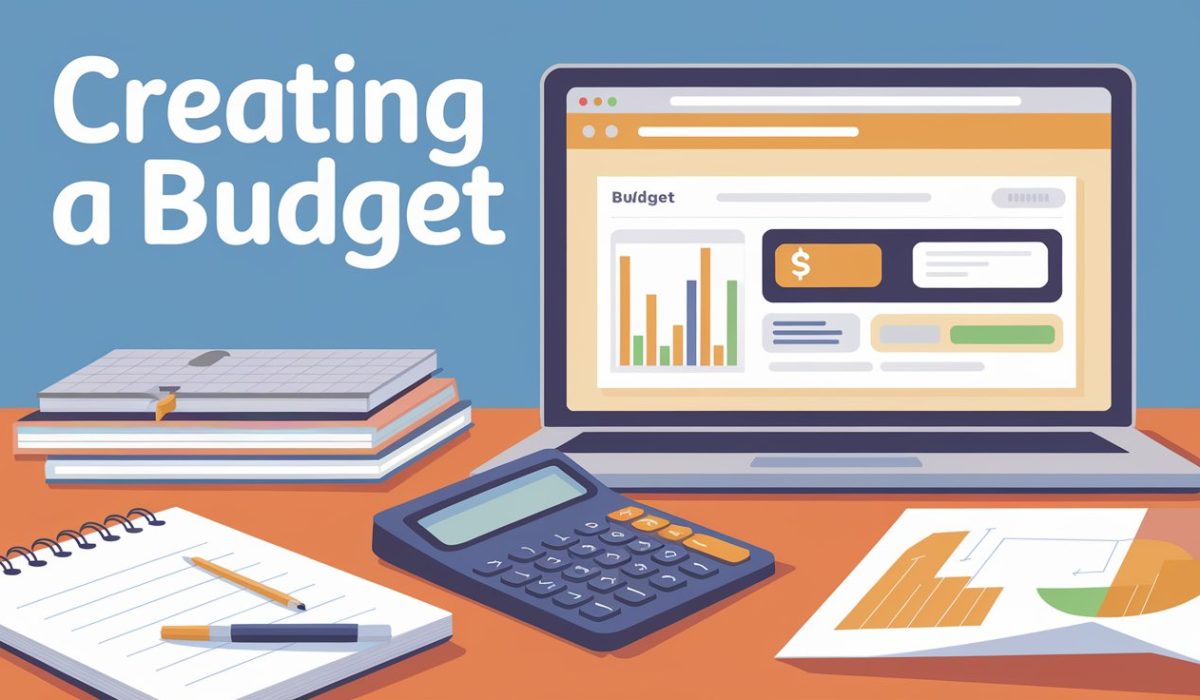Creating a Budget: A Step-by-Step Guide for Beginners
Managing your finances can sometimes feel overwhelming, but creating a budget is one of the easiest ways to take control of your money. In fact, a budget helps you track your income, control your spending, and plan for future goals. So, let’s dive into a step-by-step guide on how to create a budget that works for you.
Why Is Budgeting Important?
Before we get into the details, it’s essential to understand why budgeting is so important. First of all, having a budget allows you to see where your money is going each month. Moreover, it helps prevent overspending and encourages saving. Therefore, if you want to build financial stability, a budget is a must.
Step 1: List Your Income
The first step in creating a budget is to list all your sources of income. This includes your salary, freelance work, or any other side jobs. Make sure to note how much money you bring in each month, as this will be the foundation of your budget.
Step 2: Track Your Expenses
Next, you need to track all your expenses. For instance, list your fixed costs like rent, utilities, and insurance. Then, add in variable expenses like groceries, transportation, and entertainment. Keeping track of your spending helps you identify areas where you might need to cut back.
Step 3: Categorize Your Spending
Once you’ve listed your expenses, categorize them. For example, divide them into essential categories like housing, food, and transportation, and non-essential categories like dining out, subscriptions, and shopping. This way, it becomes easier to prioritize your spending.
Step 4: Set Financial Goals
Now that you have a clear view of your income and expenses, it’s time to set financial goals. These goals can be short-term, like saving for a vacation, or long-term, like paying off debt or building an emergency fund. Setting goals gives your budget a purpose and keeps you motivated.
Step 5: Create Your Budget Plan
Now comes the actual budgeting part. Subtract your total expenses from your total income. If you find that your expenses are higher than your income, you’ll need to adjust your spending. To do this, cut back on non-essential items or find ways to increase your income.
For example, use the 50/30/20 rule as a guideline:
- 50% of your income should go towards needs (housing, food, bills),
- 30% towards wants (entertainment, dining out),
- 20% towards savings or debt repayment.
Step 6: Monitor and Adjust
Finally, the key to sticking with your budget is to regularly monitor and adjust it. Check in weekly or monthly to ensure you’re staying on track. If you find that certain areas of your budget aren’t working, don’t hesitate to make changes.
Tips for Sticking to Your Budget
- Use Budgeting Apps: Tools like Mint, YNAB (You Need A Budget), and PocketGuard can make budgeting easier by tracking your spending automatically.
- Review Regularly: Keep reviewing your spending habits and savings goals, adjusting them as needed.
- Stay Flexible: Life is unpredictable, so your budget should have some flexibility for unexpected expenses.
Conclusion
In conclusion, creating a budget is an essential step towards achieving financial freedom. By following these simple steps, you can take control of your money, reduce financial stress, and start working towards your financial goals. Remember, budgeting isn’t about restriction; it’s about making sure your money is being spent in ways that matter most to you.
